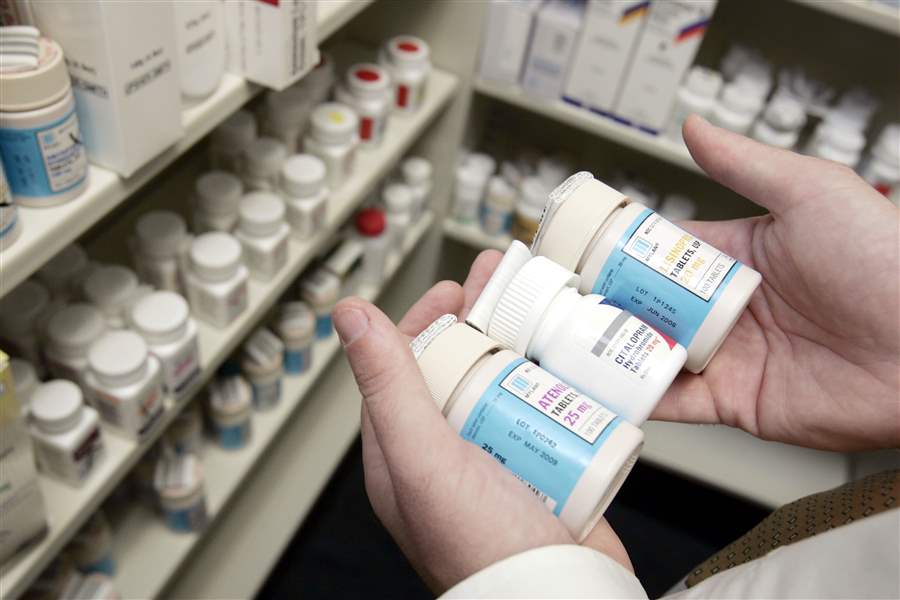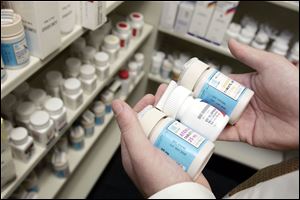
Budget prognosticators stymied over drug issue
10/11/2017
Ohio's Office of Budget and Management Director says he can't estimate any savings on prescription drugs that would be achieve if the Ohio Drug Price Relief Act (Issue 2) passes Nov. 7 at the ballot box.
ASSOCIATED PRESS
COLUMBUS — Voters aren’t the only ones scratching their heads over a ballot issue that promises to save taxpayers on prescription drug costs.
Ohio’s top numbers cruncher said his office can’t estimate the savings that might be achieved if voters were to approve Issue 2 on Nov. 7. The ballot issue asks voters to enact a state law that would prohibit the state and the health-care programs it funds from paying more for prescription drugs than the U.S. Department of Veterans Affairs pays.
There are too many moving parts, said Tim Keen, director of the Office of Budget and Management. His office’s legally mandated analysis was published on the secretary of state’s website.

Ohio's Office of Budget and Management Director says he can't estimate any savings on prescription drugs that would be achieve if the Ohio Drug Price Relief Act (Issue 2) passes Nov. 7 at the ballot box.
“The exercise in practice is not straightforward, but complex and compromised by a lack of critical information and subject to dynamic and unpredictable supply-and demand-driven pricing impacts that would be brought about by Issue 2,” the report reads.
The confusion is consistent with the war of words on both sides, evident in TV ads that point fingers at each other.
Supporters of Issue 2 argue that the state would benefit if the drug prices paid by the V.A. — either through legally mandated or voluntarily negotiated discounts — would be locked in for all state-financed programs like Medicaid.
But the other side argues that the result could have the opposite effect of raising prices on others not getting their health care through state programs and lead to drug makers declining to negotiate future discounts. The latter scenario is very plausible, according to Mr. Keen’s report.
“The Ohio market is large enough to cause drug manufacturers that are selling drugs in national markets to react,” it reads. “Even without Medicaid, the population affected by Issue 2 is at least 300,000, not counting higher education and [Ohio State University] medical center clients.
“This would seem to be a large enough expansion in the V.A. discount population for manufacturers to notice and respond to recoup any losses where possible,” it reads.
Generally, the V.A. enjoys a discount of about 24 percent. Mr. Keen’s report suggests that Medicaid and HIV drug assistance programs already pay about the same and would be unlikely to see much savings.
It notes that the V.A. has its own in-house pharmacy to supply patients, bypassing the private pharmacies that supply the patients of Ohio programs like Medicaid in exchange for a dispensing fee. The V.A. also generally serves a clientele that is disproportionately male and over the age of 45 while Medicaid serves many children and women.
Still, OMB contends, there could be some savings.
“Theoretically, if all the issues identified in this analysis were worked through to successfully implement Issue 2, it is likely there would be some state savings,” the report reads.
The backers of Issue 2 — led by Californian Michael Weinstein, president of the Los Angeles-based AIDS Healthcare Foundation — have estimated the savings for taxpayers between $400 million and $536 million annually.
“We believe the savings can be calculated, and we have produced a study that shows the range will most likely fall well within the $400 million a year that Ohio taxpayers will save when we no longer pay the excessive prices charged by big drug companies for medicine,” said Dennis Willard, spokesman for Ohio Taxpayers for Lower Drug Prices.
“All along we have maintained that the big drug companies would not be spending $2 [million] to $3 million a week to bombard the television airwaves with misleading and false ads if their bottom line was not on the line,” he said
The opposition, largely financed by the pharmaceutical industry, said, “When something sounds too good to be true, it probably is.”
“Issue 2 is simplistic, unworkable, and built on a flawed foundation,” said Dale Butland, spokesman for Ohioans Against the Deceptive Rx Ballot Issue. “It, therefore, can’t and won’t achieve anything remotely close to the wild savings estimates touted by Issue 2 proponents. Further, Issue 2 could very well increase costs for a majority of Ohio consumers, while reducing access to needed medicines for some of our most vulnerable citizens.”
https://www.sos.state.oh.us/globalassets/ballotboard/2017/stateissue2fiscalanalysis_transmittalletter.pdf